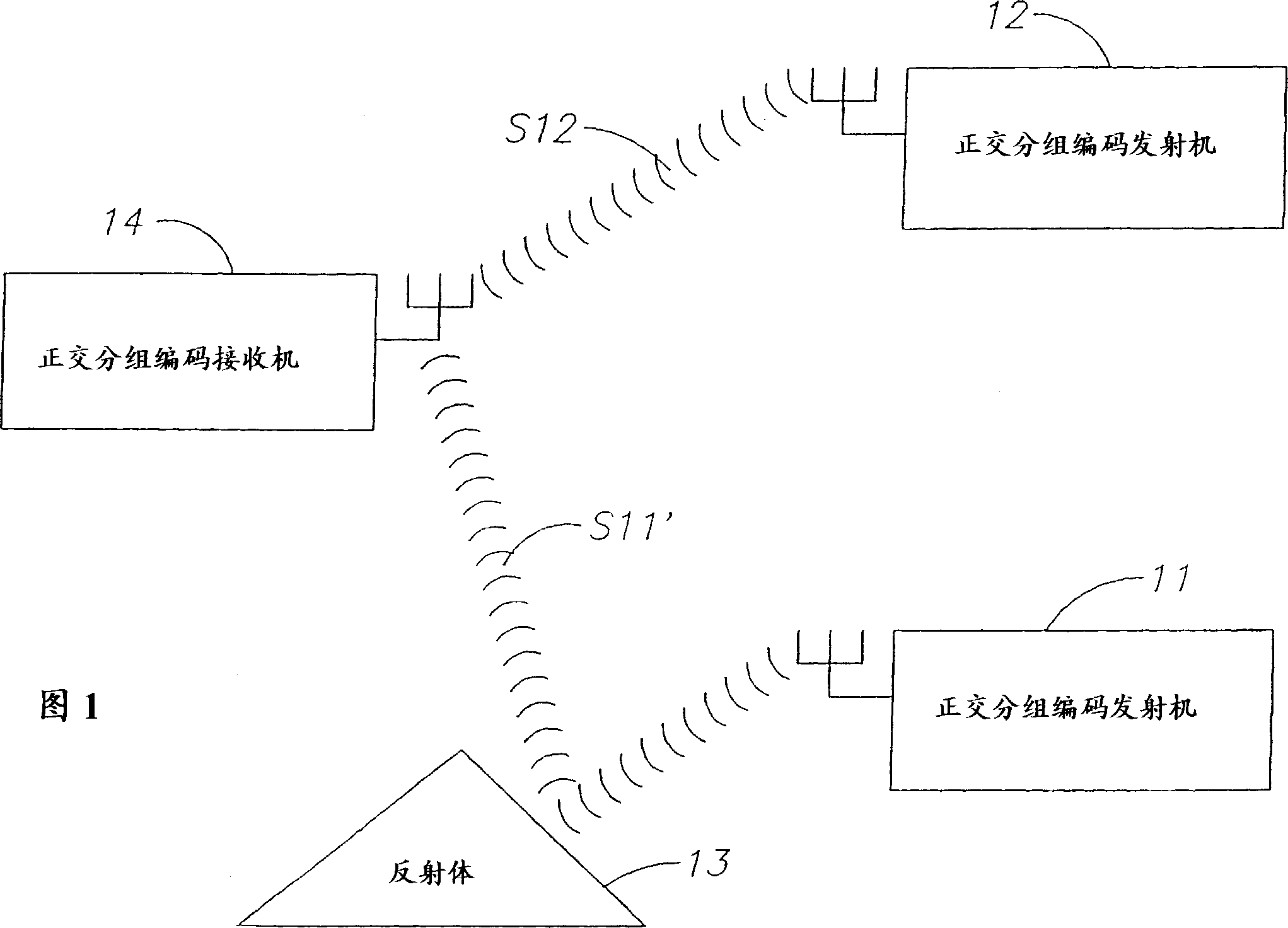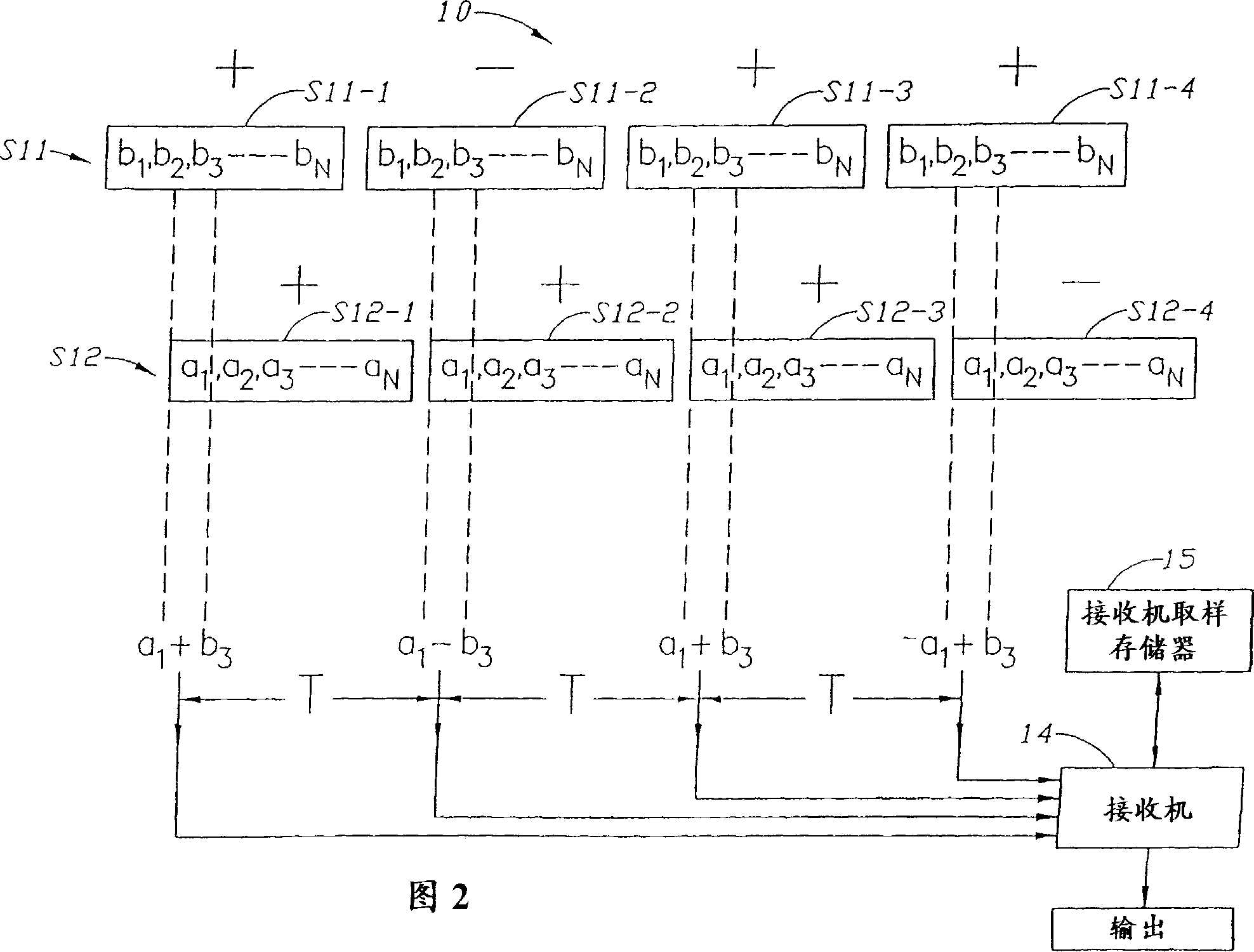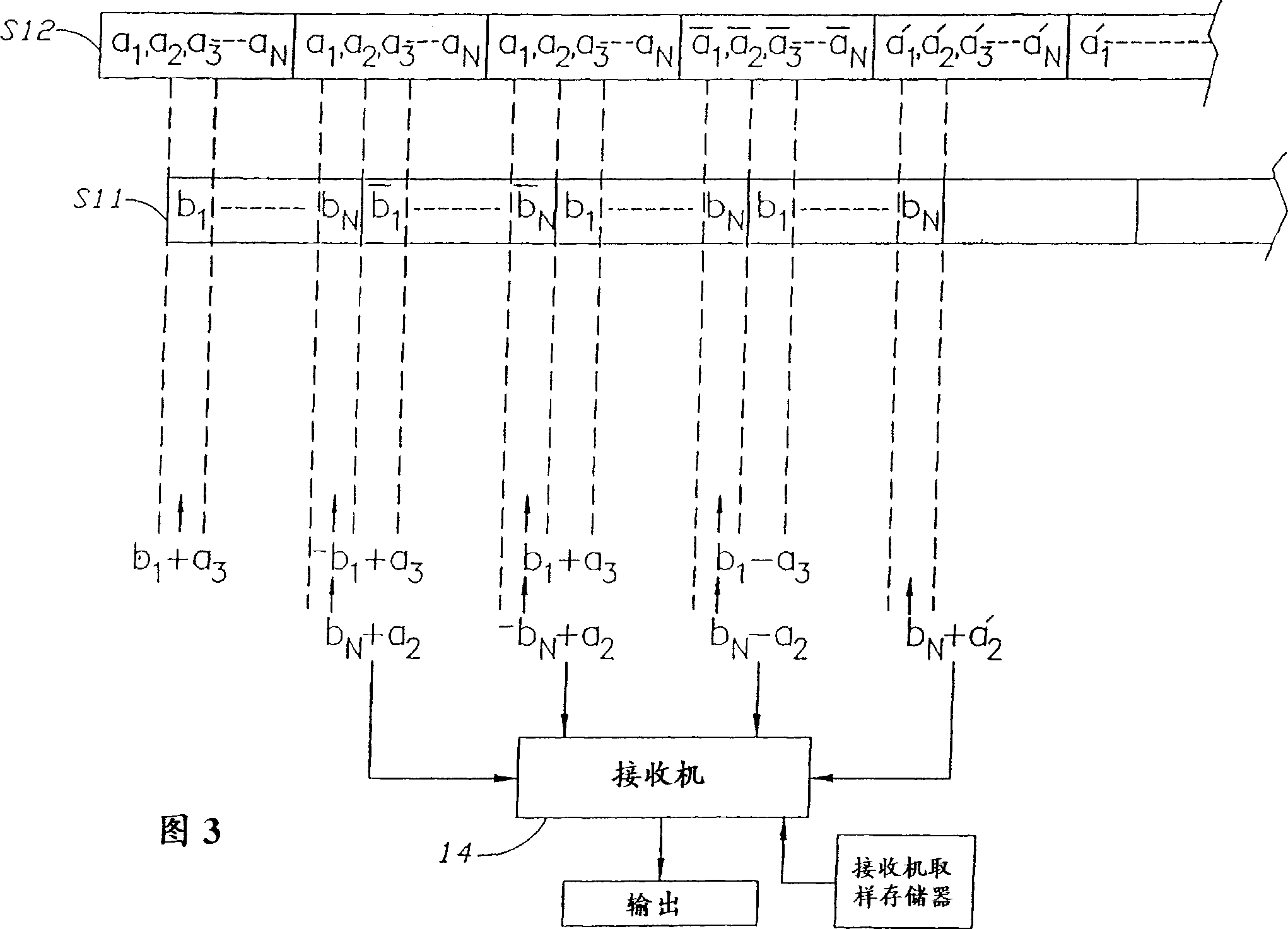Communication system and method with orthogonal block encoding
A communication system and orthogonal coding technology, applied in the field of communication systems, can solve the problems of reducing system bandwidth capacity and not completely eliminating the influence of multipath propagation
- Summary
- Abstract
- Description
- Claims
- Application Information
AI Technical Summary
Problems solved by technology
Method used
Image
Examples
Embodiment Construction
[0030] Referring to Figure 1, there is illustrated an orthogonal block code communication system 10 of the present invention comprising a plurality of transmitters, such as a pair of substantially identical block code transmitters 11 and 12, which broadcast information-carrying signals by electromagnetic waves S11 and S12. These signals S11 and S12 are preferably digital signals, although the invention can be used in the case of analog signals modulated onto a carrier. An orthogonal block coded receiver 14 receives the two signals S11 and S12, decodes the two orthogonal block coded signals, and separates them into respective output channels. A part of the orthogonal block coded signal S11 transmitted by the transmitter 11 is reflected by the reflector 13 on the ground and reaches the receiver 14 indirectly, as shown by the dotted line in the figure. Since the reflected path is longer than the direct path of the signal S12, the reflected signal S11' reaches the receiver 14 lat...
PUM
 Login to View More
Login to View More Abstract
Description
Claims
Application Information
 Login to View More
Login to View More - R&D
- Intellectual Property
- Life Sciences
- Materials
- Tech Scout
- Unparalleled Data Quality
- Higher Quality Content
- 60% Fewer Hallucinations
Browse by: Latest US Patents, China's latest patents, Technical Efficacy Thesaurus, Application Domain, Technology Topic, Popular Technical Reports.
© 2025 PatSnap. All rights reserved.Legal|Privacy policy|Modern Slavery Act Transparency Statement|Sitemap|About US| Contact US: help@patsnap.com



